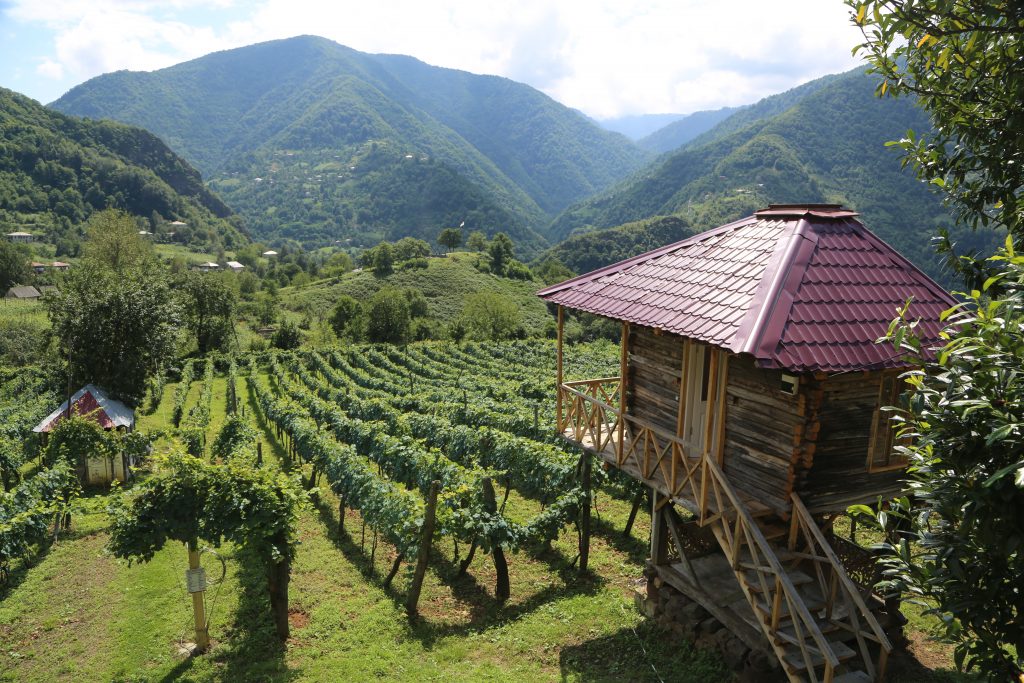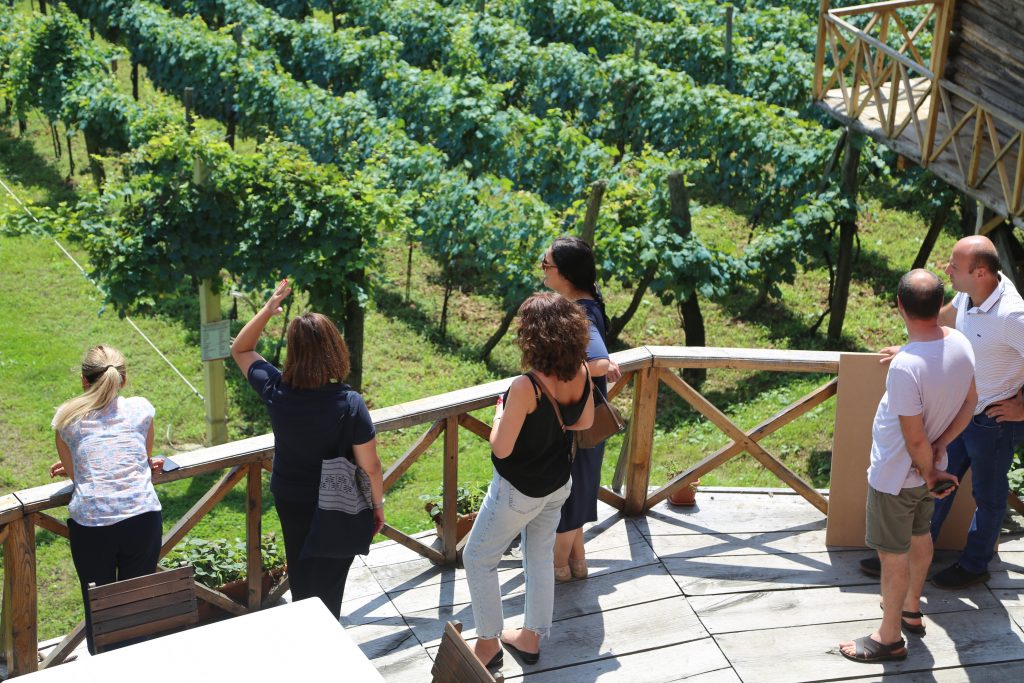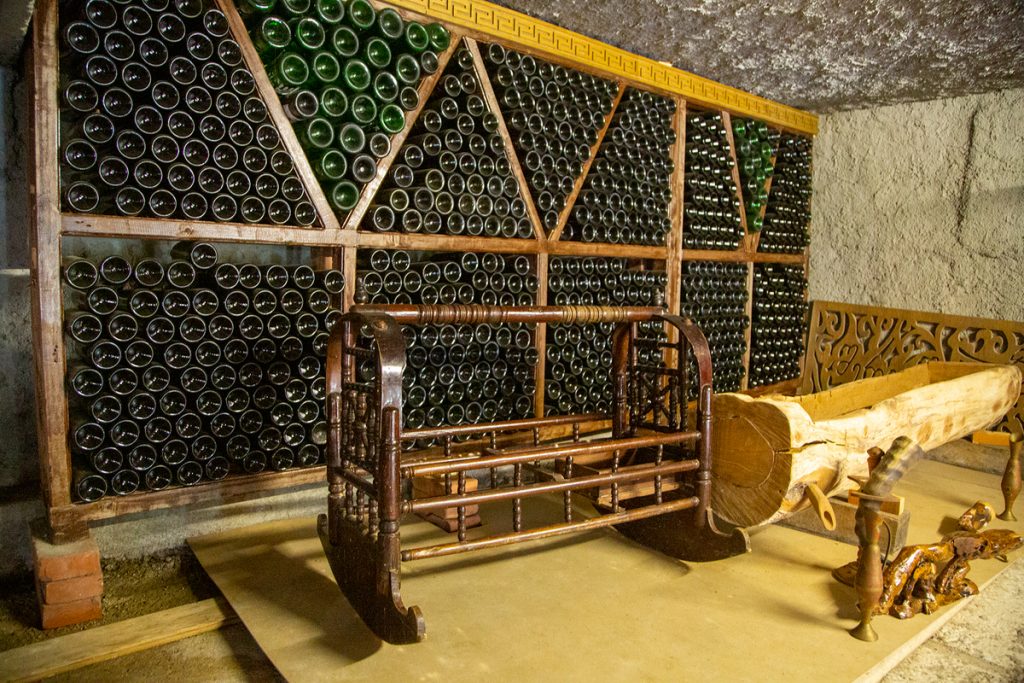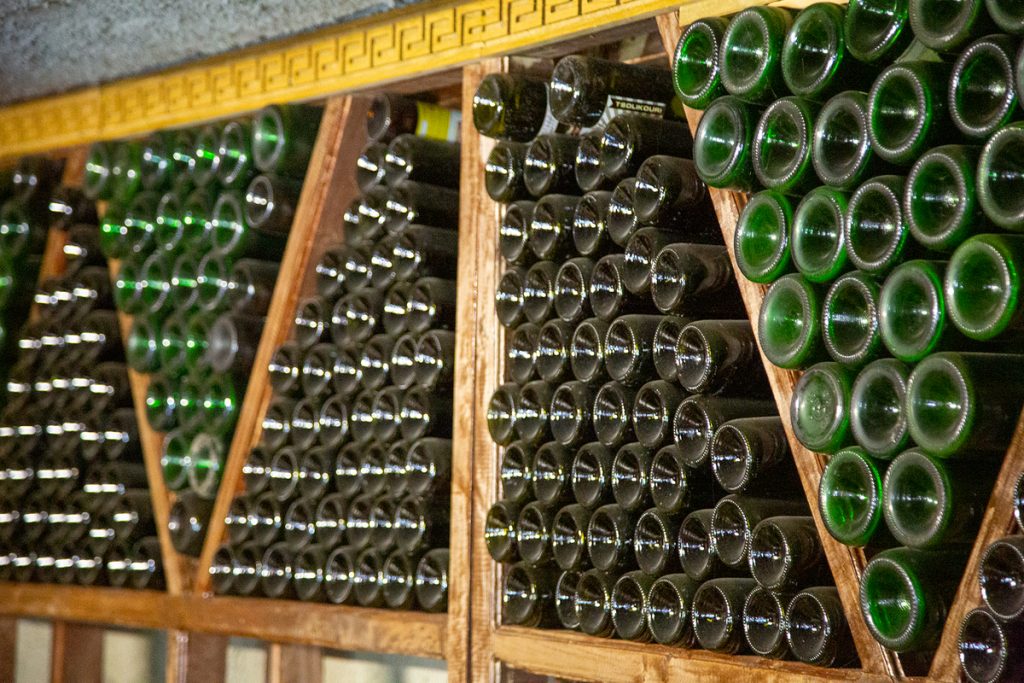
My Village: Shervashidze family expands their business and attracts more visitors in Keda
If you follow the Wine Route to Keda, you will find the Shervashidze Wine Cellar in the village of Pirveli Maisi, lost in the high mountains. When the Chkhaveri variety grape revitalization program was launched in the municipality in 2006, father and son, Nodar and Aleko Shervashidze decided to plant up to 3,200 vines on an area of 1.05 hectares, including collection varieties of Tsolikouri, Ojaleshi, Dirbula and 24 more. Since then, the door of the Shervashidze family has been open to all visitors, especially those who appreciate mountain landscapes and natural wine. They produce high quality wines in the Shervashidze Wine Cellar, and their bottled Ojaleshi won the second prize at the Family Wine Festival. The hosts have always received tourists, although the recently increased inflow has prompted expansion of the business.
“We used to have a family hotel with only two rooms accommodating up to six people, but the demand was so high that we had the idea to build cottages,” says Aleko Shervashidze.
After engaging in the Keda Local Action Group (LAG) supported by the EU ENPARD, the family decided to build four fancy cottages in their vineyard, that look like Georgian traditional corn-drying huts, nalias, with the balconies overlooking amazing local landscapes. The LAG is actively involved in the municipality’s day-to-day activities. It operates on the principles of democratic governance and development and ensures active local involvement and participation in decision-making. The Keda LAGbrings together local private, public and civil sectors, identifies rural development priorities based on the municipality’s needs and capacities assessment, and drafts local development strategies. It then also provides EU-funded grants to support local development initiatives. The Shervashidzes used the grant from the LAG to build the wooden cottages looking oldish from the exterior yet with all necessary modern interiors usually offered by fancy hotels.
According to our data, the Shervashidze Wine Cellar welcomes over 5,000 visitors every year, but they did not have overnight services. They applied with a project proposal to build four cottages, looking like traditional old ‘nalias’ with fancy interior and welcoming a total of 12 guests per night. This initiative would empower the local population, promote additional competitiveness and create additional jobs,” says Giorgi Abuladze from Keda Leader.
With LAG’s support, the Shervashidzes started the construction in December and finished in the summer. Thanks to the remarkable and exiting interior and exterior of the cottages, many tourists have already come visiting the family cellar. Apart from guest rooms, the location also offers a zipline in the vineyard for extreme sports fans, also arranged with the Keda LAG’s support. History and nature lovers have an opportunity to see historical sites dating back to the 10th-11th centuries: the Sagoreti and Tsivasula castles, an earth bridge, a Neolithic cave and of course, the local wildlife.
The cellar’s hosts are investing a lot of energy to offer uniquely warm and quiet environment for their visitors. In the evenings, you can taste different wines and traditional Adjarian dishes and take part in masterclasses.
“Our cottages are an amusement for tourists, and even those who do not stay overnight can visit the cellar and the estate during the day. Everyone adores our cottages – they have become a symbol of the Shervashidze Wine Cellar,” says Aleko Shervashidze.
The Keda Leader initiative supported by the EU and the Keda LAG, has played an important role in the effective development of the Shervashidze’s family business. The Keda LAG is one of the twelve LAGs in Georgia, having funded more than 500 rural development initiatives in the fields of agriculture, tourism, social and rural infrastructure, and environmental protection all over the country. As a result, new livelihood opportunities have been offered to over 1,000 rural households, and living conditions improved for more than 10,000 rural residents.
Watch the story here:



